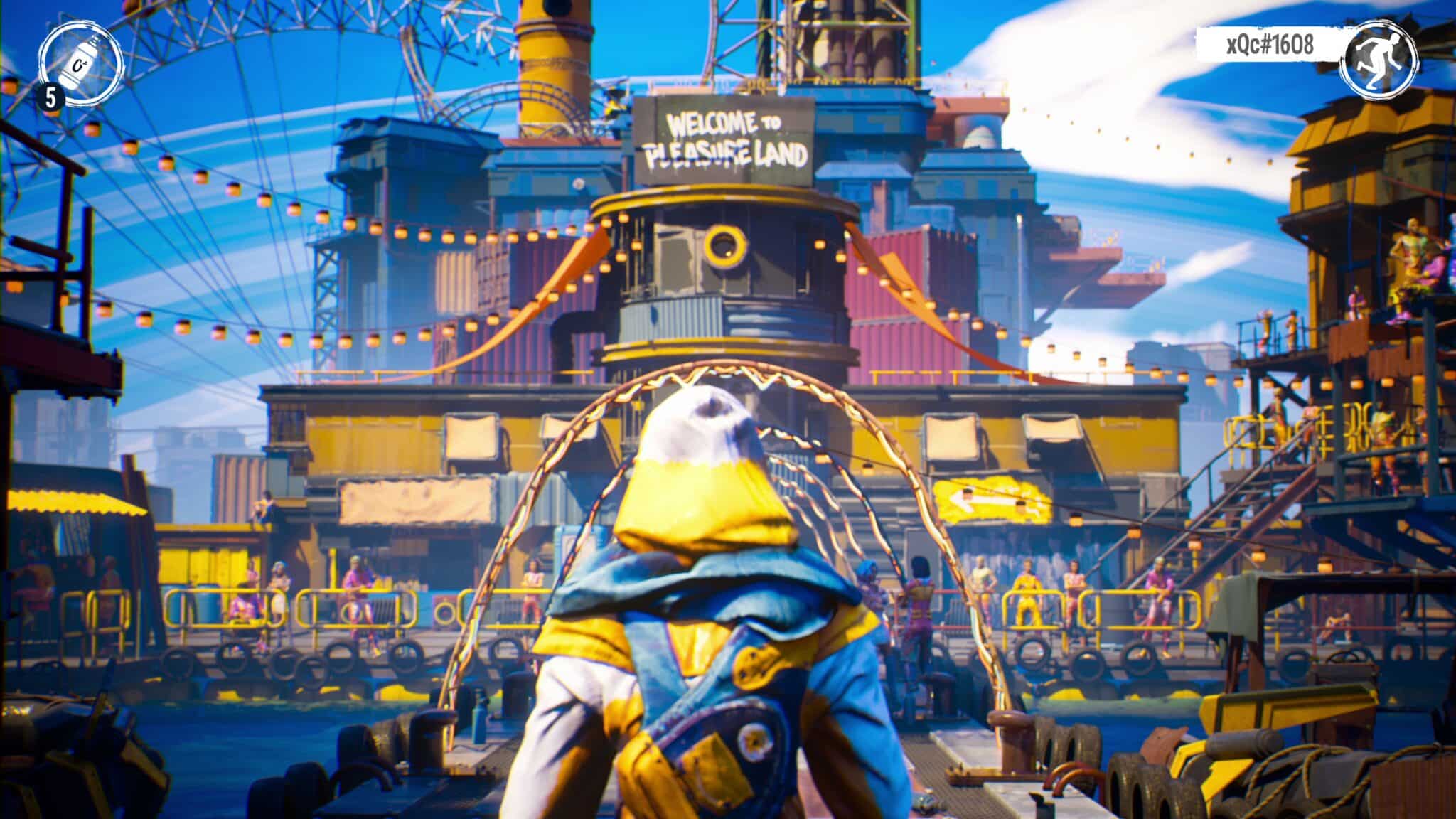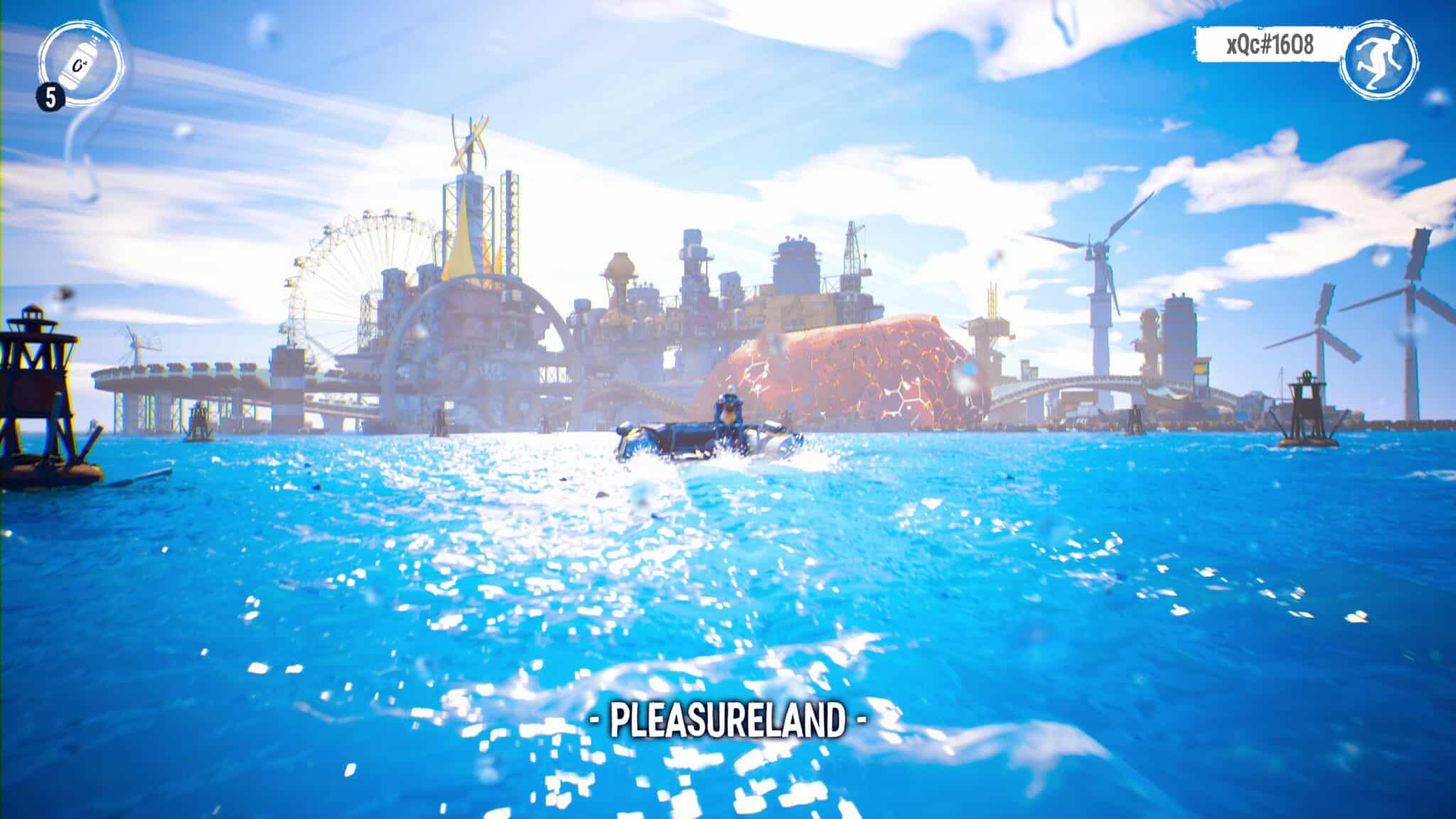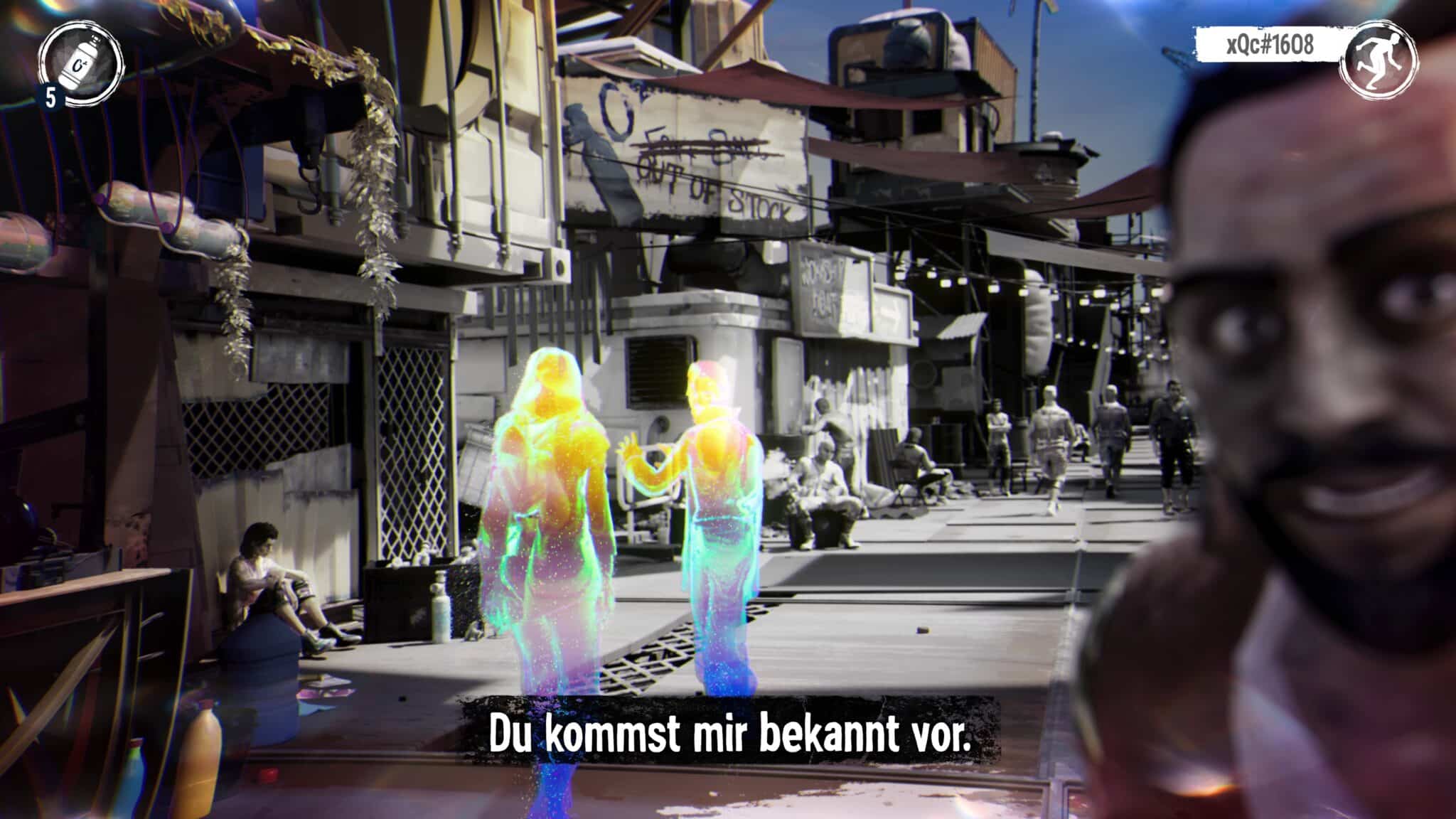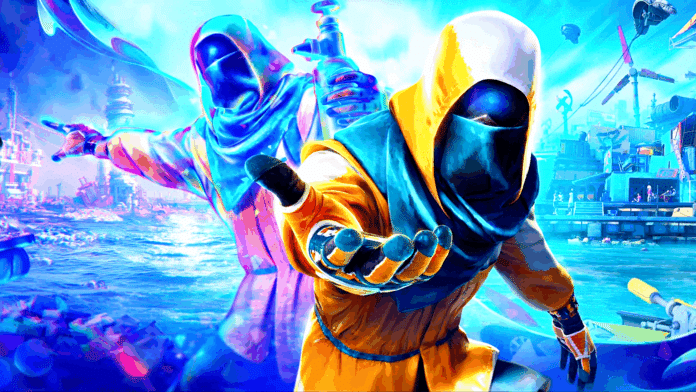The post-apocalypse is dark and sandy, as we know from the Mad Max movies. A French indie studio has other ideas.
I’m a big fan of enthusiastic developers. With their heads full of ideas, I much prefer dreamers and visionaries who glow in the dark to trained professionals who sit there calmly and only spout standard phrases during a game presentation.
The two developers from DigixArt (to whom we owe the 2021 adventure insider tip Road 96) take the idea of liveliness to a whole new level. One of them leads his presentations with so much energy that he ended up with back problems on the second day of gamescom. That’s what we call suffering for art!
Table of Contents
Every Breath You Take
The reason for the impending slipped disc is called Tides of Tomorrow and is an asynchronous multiplayer adventure. This means that the actions you take in the world not only influence your own gaming experience, but also that of the online players who come after you.
The idea behind it is this: at the beginning of the adventure, you choose a player to “follow” – this can be someone from your friends list, a popular streamer, or a random choice.
This doesn’t mean that you’re following in their footsteps and replaying their adventures.
The game starts out the same for everyone, but right after that, everyone does their own thing. And that’s where it gets interesting: each player makes individual decisions in conversations and actions.
These decisions have consequences – and thanks to the persistent world of Tides of Tomorrow, these consequences not only affect your own game, but also that of the player following you.
Every Move You Make
Sounds weird? Here’s an example: You cross a rickety bridge that collapses behind you. You don’t have to worry about it, because you’re already on the other side. But the bridge remains broken, presenting a problem for the player following you: How will they get across now?
They then have the option, for example, of paying to repair the bridge, which will also benefit the player following them. But it costs them money. They can also look for an alternative route and pass the problem on.

He can also complain to an NPC that the previous player is the great bridge destroyer, giving him a bad reputation—something that subsequent players will also notice.
This is because you play a so-called “Tidewalker,” a special type of person who all dress very similarly. And once NPCs are calibrated to believe that Tidewalkers tend to destroy things, they start to avoid them. This then makes life difficult for subsequent players.
This idea gives rise to very interesting cause-and-effect chains between the person who came before you, yourself, and the person who follows you, both on a small and large scale. This is the triumvirate that directly influences each other—which is also directly represented in the triangular logo of Tides of Tomorrow.
Every Bond You Break
Not only do you feel the effects of your “predecessor’s” actions in the environment, but you can also follow them directly from time to time: the so-called “Tides of Time” are swirling spots in the image that you can examine. This triggers a hologram-like vision that gives you a brief glimpse into the past of the player in front of you. These are short but important moments that may contain clues about how to proceed. These are real game scenes as experienced by the other player, not pre-written scripts.
However, if at any point you decide that the person you are following is just messing up or making decisions you don’t want to be a part of, you can still change your mind—the choice of who you follow is never final.
Every Step You Take
What’s this all about? The story takes place in an undefined future on the ocean planet Elynd. The name sounds like “misery” for a reason, because most of the water is badly polluted and everything is covered in trash and waste.
This, of course, has drastic consequences for the population, which is afflicted by a disease called “plastemia.” This is caused by microplastics, which accumulate in the body until the living being is nothing more than a pile of plastic. Plastemia essentially turns people into mannequins – something you can clearly see in the game.

For example, the face of a friend with whom you are planning a mission is covered in colored stripes.
This is not a trendy makeup look, but rather what will soon kill her if you cannot help her. The role of the Tidewalkers in general, and the players in particular, is to search for ways to save the world and its inhabitants.
Every Game You Play
An interesting form of interaction with subsequent players is resource sharing: resources on Elynd are limited, especially “Ozen,” a medicine that slows down the effects of Plastemia, at least temporarily, and is in high demand.
What do you do when you find some or steal it from a military camp? Do you keep it all for yourself? Do you share it with NPCs like your girlfriend? Or do you put some of it in special resource containers that only subsequent Tidewalkers can open?

If one player acts particularly selfishly and grabs all the bottles currently available from Ozen, then there will be nothing left for the player who follows them. This makes for very different gaming experiences in the same world. It also has an impact on the various possible endings of the adventure, which are influenced, among other things, by the reputation you build up in the world.
Every Night You Stay
In terms of gameplay, Tides of Tomorrow presents itself as a classic genre mix: you can have many conversations with NPCs, some with multiple-choice answers, the choice of which influences the further course of the game. There is fighting, both with your fists and with weapons in your hands.
You sneak around when you have to. If that goes wrong, you take to your heels in the parkour style of Mirror’s Edge. And, of course, you also travel a lot by boat to get from place to place.
To keep things from getting too boring, the developers have also included optional distractions such as boat races and navigation challenges.

All of this takes time, and in Elynd, the sun moves across the sky. A change in the time of day not only affects the lighting, but also the level design and the actions of the NPCs. At night, for example, there are only a few civilians out and about, but all the more guards.
I’ll Be Watching You
From a technical point of view, Tides of Tomorrow offers a very unusual view of the post-apocalypse. Namely, a very colorful one: the sun is shining, the sea glistens invitingly blue, and the NPCs are reminiscent of the Borderlands series in their comic book design – if it weren’t for the trash, suffering, and oppression everywhere, you could book a vacation right away.
By the way, you can also leave specific messages for subsequent players. Not in text form, as that would undoubtedly quickly spiral out of control.
Instead, the developers have taken their cue from Nintendo and their pre-written short messages in games like Mario Kart World, which you can use to send tips to your pursuers, as in Dark Souls.
Or simply form a heart emoji with your hands, which the others will then see as a vision.
Editor’s conclusion
Cool idea! That was my first thought after the developer explained the concept of Tides of Tomorrow with back-stretching movements. Cause and effect is one of the most important pillars of any game design. But the fact that players have a direct influence on how a subsequent friend or stranger experiences the same world is unusual and feels pleasantly fresh.
So in theory, it all sounds very interesting, and the developers’ enthusiasm was truly contagious. But how does it play? How will the experience feel for the people who follow me? Will the footprints I leave on Elynd have a noticeable impact, or is it all just superficial stuff? There are still many question marks surrounding Tides of Tomorrow, but I will be keeping a very close eye on this game. And you should too.


